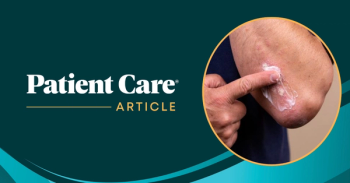
Angioplasty Bests Drug Therapy for Silent Ischemia
LUCERNE, Switzerland -- Percutaneous coronary intervention appears superior to medical therapy for asymptomatic ischemia after a heart attack even though it shows no such benefit for symptomatic post-MI angina, found Swiss researchers.
LUCERNE, Switzerland, May 8 -- Percutaneous coronary intervention appears superior to medical therapy for asymptomatic ischemia after a heart attack even though it shows no such benefit for symptomatic post-MI angina, according to Swiss researchers.
Angioplasty for "silent" ischemia reduced major adverse cardiac events 6.3% per year compared with intensive drug therapy, found Paul Erne, M.D., of the Kantonsspital Luzern here, and colleagues, in long-term follow-up of a pre-stent-era trial.
"Our findings argue for an ischemic-targeted approach to percutaneous coronary intervention among asymptomatic survivors of myocardial infarction," they reported in the May 9 issue of the Journal of the American Medical Association.
Although several major trials have recently addressed therapy after an MI, this study is the first to report long-term outcomes of percutaneous coronary intervention for silent ischemia, they said.
They followed 201 patients in the Swiss Interventional Study on Silent Ischemia Type II study for an average of 10 years after treatment.
The study originally enrolled patients at three Swiss medical centers with a recent heart attack and no angina during an exercise test, but who had silent myocardial ischemia verified by stress imaging. The study ran from 1991 to 1997.
All patients had one- or two-vessel coronary artery disease at coronary angiography that was suitable for percutaneous coronary intervention.
They were randomized to undergo balloon angiography or to receive medical therapy consisting of 5 to 10 mg/d of bisoprolol (Zebeta), 5 to 10 mg/d of amlodipine (Norvasc), 4 to 12 mg of molsidomine twice daily, or combinations thereof.
In the drug therapy group, 90.5% received a ?-blocker, 53.3% received a calcium channel blocker, and 62.9% received a long-acting nitrate.
Patients in both groups received 100 mg of aspirin daily, a statin, and secondary preventive advice on weight management, diet, smoking cessation, and exercise.
The groups were well matched in baseline characteristics, except dyslipidemia was more common (75.0% versus 58.1%, P=0.01) and left ventricular ejection fraction was lower (9.9% versus 11.8%, P=0.001) in the PCI group.
During follow-up, 94 patients had at least one major adverse cardiac event (cardiac death, recurrent nonfatal heart attack, or revascularization), the primary endpoint.
Comparing the angioplasty and medical-therapy groups, the 10-year adjusted findings were:
- Significantly lower incidence of major adverse cardiac events in the PCI group (3.2% versus 9.5%, hazard ratio 0.33, 95% confidence interval 0.20 to 0.55, P<0.001).
- Significantly fewer cardiac deaths in the PCI group (HR 0.19, 95% CI 0.05 to 0.67, P=0.01).
- Significantly fewer nonfatal recurrent myocardial infarctions in the PCI group (HR 0.31, 95% CI 0.15 to 0.65, P=0.002).
- Significantly less angina not leading to revascularization in the PCI group (HR 0.37, 95% CI 0.18 to 0.78, P=0.009).
- A trend toward lower all-cause mortality in the PCI group (HR 0.42, 95% CI 0.16 to 1.11, P=0.08).
Despite achieving higher workloads on exercise testing at the 10-year follow-up (P<0.001), the angioplasty group had less ischemia on exercise electrocardiograms (11.6% versus 28.9%, P=0.03).
Angioplasty also appeared to preserve left ventricular ejection fraction (mean 53.9% at baseline versus 55.6% at 10 years), whereas ejection fraction declined among medical therapy patients (mean 59.7% at baseline versus 48.8% at follow-up, P<0.001).
"We found a persistent benefit of percutaneous coronary intervention compared with optimized drug therapy," the researchers concluded. "This benefit became apparent only after two years of observation, with survival curves continuously diverging up to the final follow-up after 10 years."
The results extend observations from two short-term pilot studies comparing the two strategies for asymptomatic patients. One found equivalence at one year, and the other found advantages to percutaneous coronary intervention at two years.
The patients in these studies were different from most enrolled in the Clinical Outcomes Utilizing Revascularization and Aggressive Drug Evaluation (COURAGE) trial reported in March at the American College of Cardiology meeting.
For stable angina patients, the COURAGE trial found no advantage in any major cardiovascular endpoint for coronary stenting plus optimal medical therapy over medical therapy alone.
Another recent trial, the Open Artery Trial (OAT) reported at the American Heart Association meeting in November 2006, found no benefit for late percutaneous coronary intervention after heart attack over four years of follow up.
However, the researchers noted that their study included a more select group of patients than the OAT study since all had viable myocardium.
"Taken together, these findings indicate a need for percutaneous coronary intervention after myocardial infarction only in the presence of symptomatic or silent ischemia but not without it," they wrote.
However, they noted that the trial was limited by lack of blinding (though all events were adjudicated by blinded physicians), a minority of female patients, and relatively small sample size.
Importantly, "the interventions in this study represent the state of the art from a decade ago," they wrote. "Newer developments in medical and interventional therapy such as high-dose statins and clopidogrel [Plavix] as well as the use of stents may have improved outcomes."
Newsletter
Enhance your clinical practice with the Patient Care newsletter, offering the latest evidence-based guidelines, diagnostic insights, and treatment strategies for primary care physicians.























































































































































































































































































































